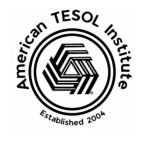TESOL for children certification focuses on teaching English to young learners. Understanding developmental stages of young learners supports teachers in adapting appropriate ESL lesson plans for a particular age group.
Teaching English to young learners is one of the most rewarding and impactful roles a TESOL-certified educator can take on. As the demand for English language instruction grows globally, equipping children with English skills early on opens doors to better education, broader career opportunities, and enriched cultural exchange. However, the approach to teaching English to children has evolved significantly since the 1970s. Let’s explore how teaching has changed, why these shifts matter, and how TESOL certification can prepare you for this vital role.
Teaching English to Young Learners in the 1970s
In the 1970s, teaching English to children was more structured and traditional. Classrooms were often teacher-centered, with a focus on grammar drills, vocabulary memorization, and repetitive exercises. Lessons typically relied on printed textbooks and rote learning. Interaction was limited, with students primarily listening to lectures or repeating phrases.
While these methods were effective in instilling foundational grammar and vocabulary, they often lacked engagement and real-world application. Fun fact: In the 1970s, audio-visual aids like cassette tapes and overhead projectors were considered cutting-edge technology in language classrooms!
How Teaching Has Evolved Today
Fast forward to today, and the landscape of teaching English to young learners has transformed dramatically:
- Student-Centered Learning: Modern teaching methods prioritize active participation and engagement. Activities such as group discussions, role-playing, and project-based learning are now integral to lessons, giving children a chance to use English in meaningful ways.
- Technology Integration: From interactive whiteboards to gamified apps and online learning platforms, technology has revolutionized the classroom. Children today are digital natives, and using tech tools can make language learning both fun and effective.
- Focus on Communication: Rather than memorizing grammar rules, the emphasis is on communication and functional language use. Teachers encourage students to express themselves, even if it means making mistakes—a key part of the learning process.
- Cultural Sensitivity: Lessons today often include cultural context, helping children understand the world beyond language. Fun fact: Incorporating storytelling about diverse cultures has been shown to increase children’s retention and enthusiasm for learning English.
- Early Exposure: Many schools now introduce English as early as preschool. Research shows that children are particularly adept at picking up new languages during their formative years, making early instruction highly effective.
Why These Changes Matter
The shift from rigid, grammar-focused teaching to interactive, communicative methods reflects a deeper understanding of how children learn. Children are naturally curious, imaginative, and eager to explore, and modern methods harness these traits to make learning English enjoyable and impactful.
How TESOL Certification Prepares You
A TESOL certification for teaching English to young learners equips educators with the skills and strategies to thrive in today’s classrooms. Here’s how it helps:
- Comprehensive Training: Learn child-centered teaching methodologies, including storytelling, games, and songs, to keep young learners engaged.
- Cultural Awareness: Understand how to integrate cultural elements into lessons, making language learning a bridge to global understanding.
- Technology Skills: Gain expertise in using digital tools and online platforms to enhance your lessons.
- Classroom Management: Learn how to create a positive and supportive classroom environment, tailored to the needs of young learners.
- Developmental Insights: Understand how children’s cognitive and emotional development affects language acquisition, enabling you to adapt your teaching to their needs.
Fun Facts About Teaching English to Children
- Children Learn Better Through Play: Incorporating games into lessons can boost motivation and retention.
- Songs Work Wonders: Children can remember new words faster through songs and chants. Fun fact: Nursery rhymes are still a go-to tool because they mimic natural speech patterns.
- Tech-Savvy Kids: Today’s young learners often adapt to language-learning apps and online tools faster than their teachers!
- Short Attention Spans: Most children can focus for only 10-15 minutes, making it essential to use a variety of engaging activities.
The Joy of Teaching English to Young Learners
Teaching English to young learners isn’t just about language instruction; it’s about shaping their future. As a TESOL-certified educator, you’ll have the opportunity to ignite a lifelong love for learning, build their confidence, and give them a skill that connects them to the world.
Whether you’re using games, songs, storytelling, or technology, teaching English to children is a journey filled with creativity, energy, and countless rewarding moments. And with a TESOL certification, you’ll have all the tools you need to make a lasting impact in your students’ lives.
So why wait? Step into the vibrant, dynamic world of teaching English to young learners and be part of their incredible journey toward success!
Learn More – TESOL Certification to teach English to Children



